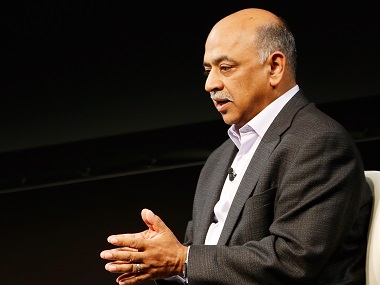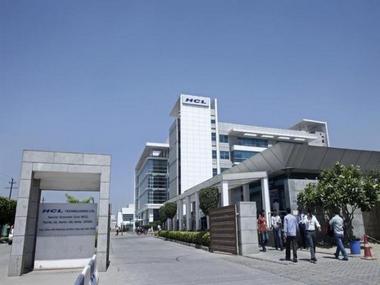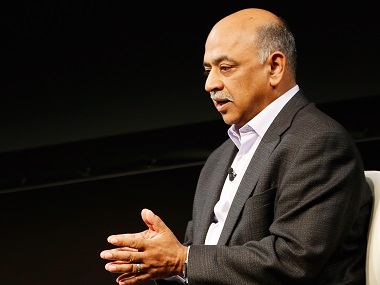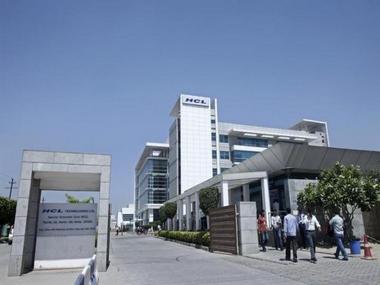Dynamic changes in software defined cloud networking are propelling enterprises to seek innovative solutions for their datacentre designs. Enterprises are looking towards modern networking solutions that move beyond traditional assumptions and approaches to leverage cutting-edge hardware and software solutions.
After the recent launch of the new Arista 7000 X Series by Arista Networks, Biztech2.com speaks with Jayshree Ullal, the President and CEO of Arista Networks about innovation, SDN and the head-to-head competition Arista faces from Cisco.
Jayshree Ullal, a veteran networking executive and former Senior Vice President at Cisco was responsible for USD$10 billion in annual revenue from its Data Center, Switching and Services division. Jayshree holds a B.S. in Engineering (Electrical) from San Francisco State University and an M.S. in Engineering Management from Santa Clara University. She has over 25 years of industry experience and has been deemed as “one of the top five most influential people in the networking industry today” by Forbes, as “one of the 50 most powerful people” by Network World, and as one of the “20 powerful women-to-watch” by Newsweek.
In your time at Cisco, you saw a less than one billion dollar company turn into a 12 billion dollar firm as you left, what lessons do you carry with you that you hope to employ at Arista for similar growth?
The contrast is stunning.
Times were different at Cisco. The advent of the worldwide web created a 0 to $20B switching market in enterprise that I contributed to in the 1990s and 2000 decade.
Arista started at ground zero and here we built a company with an outstanding set of founders, technology, executives, and teams in every functional area to grow from zero to a billion dollar journey.
Do you see a paradigm shift occurring within the networking industry as a whole with the advent of disruptive technologies and service practices? Or is the foundation of networking unlikely to change in the near future?
Absolutely!
Today that legacy enterprise is under siege, attack and disruption via new cloud applications in public and private clouds. You cannot simply take enterprise products and package them for cloud. At Arista we have developed a start up from ground zero. Think of us as the “Amazon” of networking and it is true that laggards in the enterprise are unlikely to change. But early adopters and thought-leaders are indeed changing already.
How much of the start-up attitudes do you still leverage in Arista’s current stage of growth?
We are going from being a small start up to a giant start up, retaining the agility and keeping overheads low, but scaling customer support and coverage to our customers as needed.
Widely considered the pioneer in SDN applications, with your EOS offering, how do you find the steps being taken by your competitors in the market to capitalise on SDN solutions?
SDN is not a technology to us but a suite of programmable apps we offer. It starts by having a programmable state based foundation and offering network based apps like Open workload with Microsoft and Vmware, Telemetry with Splunk and Riverbed and Smart System Upgrade with F5 as examples of SDN being a true value add for customers. We are not just supplying SDN technology but SDN solutions.
How are you developing your SDN ecosystem? What changes to you envision in the next 2-5 years?
The key is programmatic APIS to work with leading vendors and open tools for Linux and python scripting We have demonstrated this with Aruba, Openstack community, F5, Microsoft, Palo Alto Networks, SAP, Splunk and Vmware to name a few.
We also have a development community that is growing (EOS Central) for customers to build their own extensions, a powerful way to augment our offerings.
How do you envision a change in your SDN (EOS) offerings over the next few months to leverage the maximum utility from the new the new Arista 7000 X Series?
We will actually not change but remain steadfast in our mission for a single, I mean ONLY ONE binary image across our EOS. While others lack programmability they also have 1000s of releases to keep track of which is an operational nightmare.
SDN = EOS + Dramatic Operational savings and a self-healing offering vital in large-scale clouds.
You have positioned the new Arista 7000 X Series as a direct competitor of the Cisco Catalyst 6500 line, but with over USD$ 20 billion dollars of business and the accompanying customer loyalty, do you believe Arista will be successful in capturing market share from Cisco this late in the game?
The Catalyst 6500 is and will always be a successful “Swiss army knife” for enterprises in 1Ggigabit campus, aggregation and core networks. This was my baby for a decade. Two decades later however the market has changed. Our customers are asking for a data centre alternative to Catalyst 6500 after 2 decades of great use. We however see that customers need a new Spline network for middle and end of row networks to aggregate 10G/40G/100G network in the Data Centre. This is a $10B installed base that will appreciate getting compelling price/performance, lower power by 50% in equivalent space.
For the longest time Arista has offered specialised applications support along key vertical segments, does the foray into the “Swiss-army knife approach” that is mastered by Cisco, seem like a winnable battle in the market?
We are not developing a “Swiss-army knife” for general enterprise. Legacy apps will continue to reside, it is in the mainframe and client server world where north-south traffic is the key parameter.
But we are creating a compelling cloud offering for enterprise to strongly consider a cloud model for big data, compute, and virtualisation transactions where east-west traffic is the disruptor. I guess we are creating “purpose built” knives for insertion not a blunt broad offering.
How different is the new Arista 7000 X Series from its contemporaries and how does that impact cloud application outcomes for enterprises?
There is no predecessor to the 7000X series. It’s a new category we call the “Spline” Tarhed for entry level configurations of 100-2000 servers while our current leaf-spine cloud network designs target 100K+ servers and 1 Million Virtual co-machines so they are complementary.
Given the confidence in the new line of the Arista 7000 X Series, what form of revenue growth are you projecting?
We don’t usually project specific numbers but a good measure of our success is it took us five years to achieve a million ports but our available market is 50 million ports through the X series portfolio expansion.
Does this new product release bring Arista Networks closer to going public?
Going public is not related to our products, the two are not tied events. Building best of breed products is Arista DNA, we have the most modern programmable operating system. We have the best products and we are disrupting the enterprise with our new Spline networks. Others mimic us or claim it, we have had it for five years and are increasing our lead.
The focus of the new line is on form factor reduction for single tier efficiency and optimised performance, how significantly different do you believe the resulting metrics to be from Cisco’s next product offering? How vast are the differences in ROIs between Arista 7000 X and the next potential offering from Cisco?
Hardware wise the metrics leverage similar merchant silicon. It’s great to see Arista’s strategy being mimicked and validated (smiles). While hardware platforms change every 2-3 years, network OS has remained inflexible despite claims of programmability, nobody has a more open modern, state oriented software, and such things cant be developed by marketing an acronym and repackaging existing OS. One must thoughtfully develop operational features that give you dramatic operational savings, scale to millions of cloud agents and offer an open not proprietary closed architecture.


)




)
)
)
)
)
)
)
)